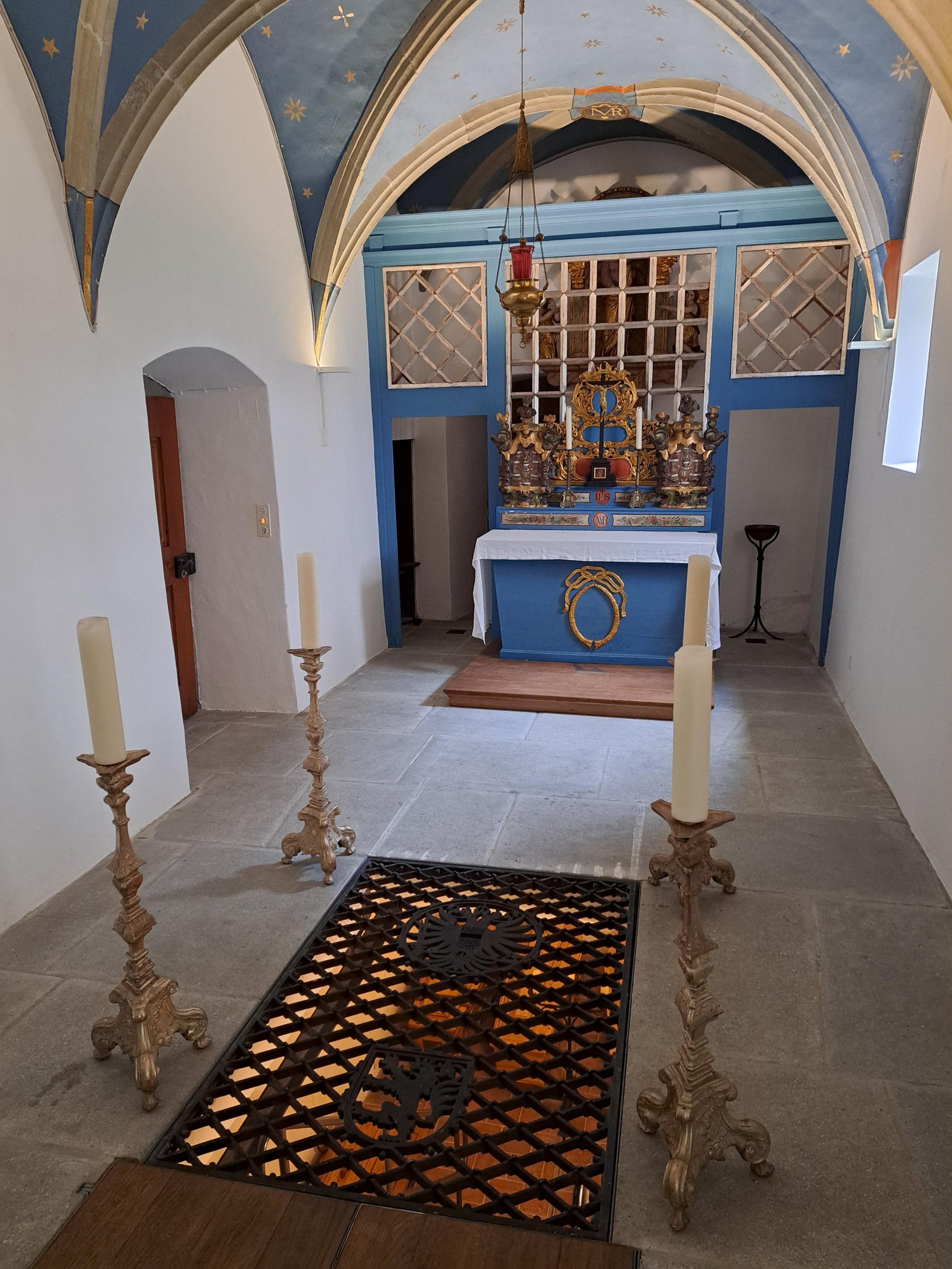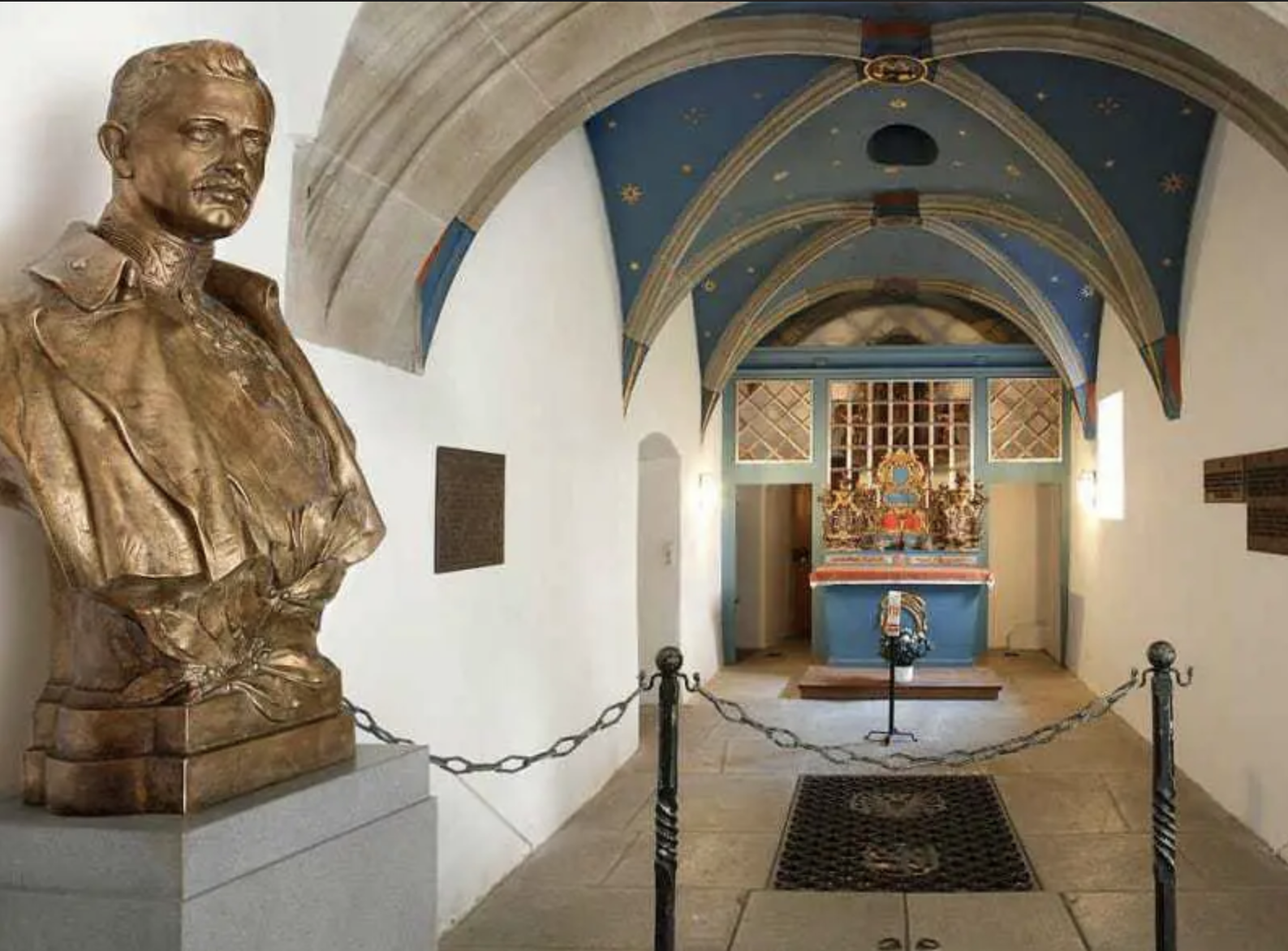
Karl’s Heart
When Emperor Karl died in 1922, tradition called for his body be buried in Vienna’s Habsburg Crypt. However, the government powers that forced the family into exile forbid his funeral or burial in the lands of the Monarchy. Karl’s mortal remains would thus remain in Madeira, his place of exile, but his heart would come to be interred in Switzerland.
Loreto Chapel, Muri Abbey, Switzerland
Members of the Habsburg Royal family are traditionally buried in the Imperial crypt of Vienna’s Capuchin Church, but the death of Frederick IV in 1654 ushered in a new burial tradition. To honor his Marian devotion, he requested that his heart be interred in the Loreto Chapel at Vienna’s Augustinerkirche. With this simple act of piety, a new custom began.
By 1878, 54 hearts had been interred in copper or silver urns in the crypt space known as the Herzgruft (Heart-crypt). When Karl assumed the throne in 1916 as Emperor of Austria and King of Hungary, it was assumed he would follow the same tradition given his devotion to the Blessed Virgin Mary. However, the government powers that later forced him into exile forbid his funeral or burial in any lands that had belonged to the Monarchy.
After Karl’s death and later Requiem Mass on April 4, 1922, his body was entombed under the Marian Side Altar at Nossa Senhora do Monte—the church high atop Madeira island near the family’s home. His heart, however, was placed in a silver urn and kept by his wife, Empress Zita. For the decades that followed, the heart that beat for God, his people, and his family remained under her care.
Following the death of her husband, Zita wore black mourning dress the rest of her life. This photo taken just a few years after the death of Karl captures Zita and their children.
In 1970, the family looked to Muri Abbey in Switzerland as the final resting place for Karl’s heart. Muri Abbey had been donated by the Habsburgs to the Benedictines in 1027, and for over eight centuries it flourished and served as the oldest burial place for the Habsburg family.
The spread of the French Revolution and a 1841 dispute, however, led to the dissolution of the monastery and the monks were forced to flee to a new foundation in Bolzano. Nothing, though, would extinguish Muri Abbey or her importance.
In 1941, the monastery church was handed over from civil authorities to the Catholic parish of Muri. Since then, they have worked with the Bolzano monks of Muri-Gries Abbey to maintain its religious and cultural heritage.
In 1970, the Habsburg family reached an agreement with the Catholic parish and the Muri community for a family crypt for Emperor Karl, his wife Zita, and the family’s direct descendants. The Crypt, known as the Loreto Chapel, was soon restored in anticipation of its revived life. In 1971 with the restoration complete, Zita entrusted Emperor Karl’s heart to Muri Abbey for burial. The silver urn containing the Emperor’s heart was sealed within a black marble stele behind the altar’s grille. Muri Abbey pulsated back to life again as it became a new place of pilgrimage. Every year on April 1—the anniversary of her husband's death—Empress Zita would visit the small Loreto Chapel.
The marble stele behind the altar grille containing the hearts of Karl and Zita. Loreto Chapel, Muri Abbey, Switzerland
When Empress Zita died on March 14, 1989, her body was first laid out in the Loreto Chapel before transfer to Austria for burial in Vienna’s Capuchin Crypt. Shortly thereafter on December 17, Zita's heart arrived back at Muri for burial just beneath Karl’s heart. Years late, their sons Robert, Felix, and Rudolph would be buried near their parents’ hearts in the Loreto Chapel.
On a plaque near the altar one can read: Behind this altar now rests in God's holy peace the long-suffering heart of Her Majesty the Empress and Queen Zita, Princess of Bourbon and Parma, born in Pianore on May 9, 1892, passed away blissfully in the Lord on March 14, 1989 in the Johannesstift in Zizers, after 67 years of separation united with the heart of her husband, Emperor Charles I of Austria, who returned home to his Creator in Madeira on April 1, 1922 , Apostolic King of Hungary, King of Bohemia, Croatia, Galicia, Dalmatia etc. etc.
Today the crypt serves as a place of pilgrimage and welcomes all who are devoted to Blessed Karl and his wife, Servant of God Zita.



